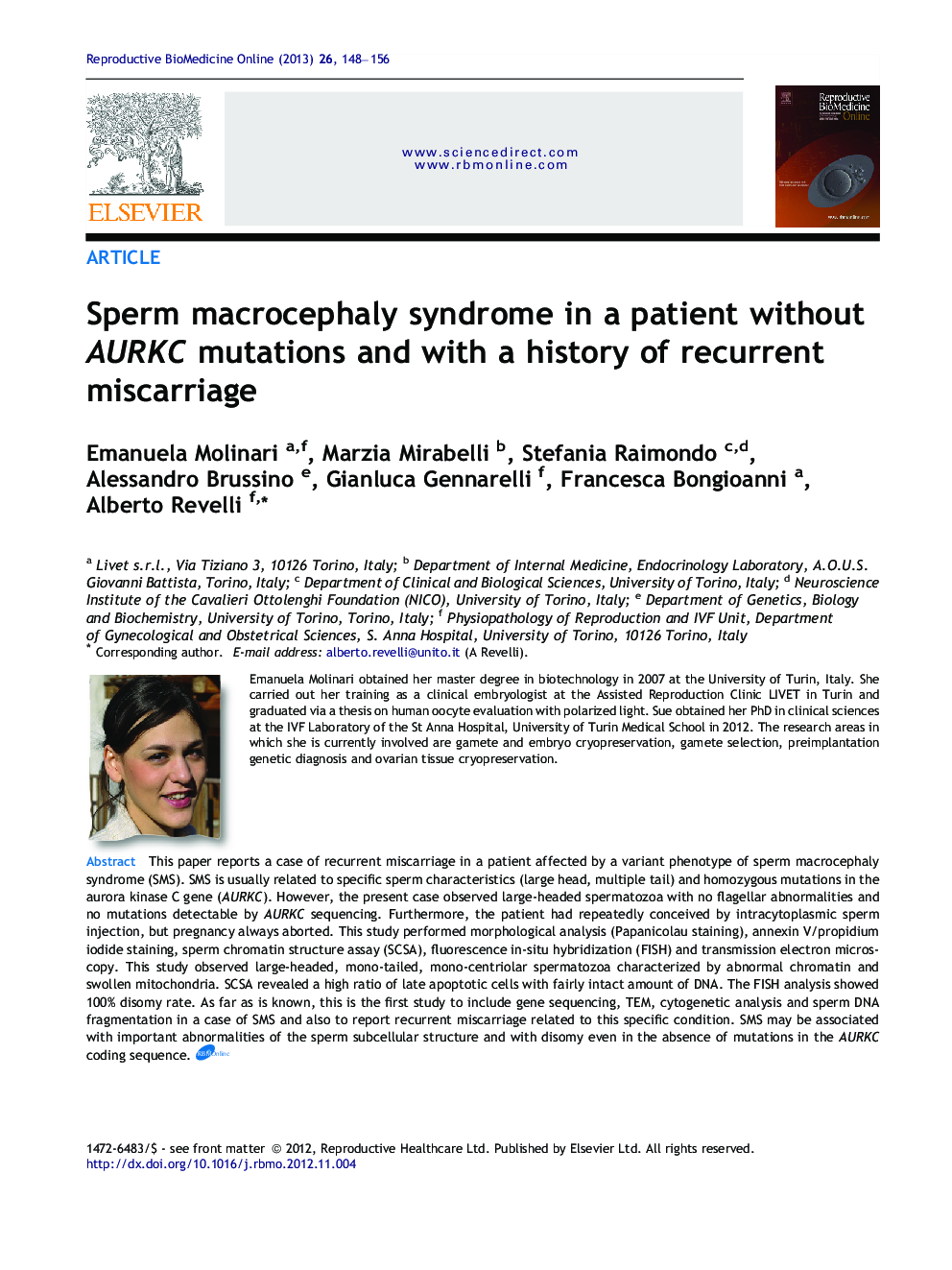| Article ID | Journal | Published Year | Pages | File Type |
|---|---|---|---|---|
| 3970352 | Reproductive BioMedicine Online | 2013 | 9 Pages |
This paper reports a case of recurrent miscarriage in a patient affected by a variant phenotype of sperm macrocephaly syndrome (SMS). SMS is usually related to specific sperm characteristics (large head, multiple tail) and homozygous mutations in the aurora kinase C gene (AURKC). However, the present case observed large-headed spermatozoa with no flagellar abnormalities and no mutations detectable by AURKC sequencing. Furthermore, the patient had repeatedly conceived by intracytoplasmic sperm injection, but pregnancy always aborted. This study performed morphological analysis (Papanicolau staining), annexin V/propidium iodide staining, sperm chromatin structure assay (SCSA), fluorescence in-situ hybridization (FISH) and transmission electron microscopy. This study observed large-headed, mono-tailed, mono-centriolar spermatozoa characterized by abnormal chromatin and swollen mitochondria. SCSA revealed a high ratio of late apoptotic cells with fairly intact amount of DNA. The FISH analysis showed 100% disomy rate. As far as is known, this is the first study to include gene sequencing, TEM, cytogenetic analysis and sperm DNA fragmentation in a case of SMS and also to report recurrent miscarriage related to this specific condition. SMS may be associated with important abnormalities of the sperm subcellular structure and with disomy even in the absence of mutations in the AURKC coding sequence.Sperm macrocephaly syndrome (SMS) is a rare condition that affects spermatozoa and is related to infertility. It is characterized by a specific phenotype of large-headed, multi-tailed spermatozoa with an abnormal chromosomal status. A very few pregnancies have been obtained so far in SMS patients by means of IVF procedures. We present a case of SMS that differs from the classical syndrome as we observed large-headed spermatozoa without tail abnormalities. The affected patient had achieved three pregnancies following IVF, but all aborted. We carried out a detailed examination of the patient’s spermatozoa – morphological, cytogenetic, DNA fragmentation and ultrastructural analysis – and we observed that his spermatozoa are characterized by a large head whose texture appears apoptotic, a single tail and a midpiece whose mitochondria appear swollen. The DNA content within the spermatozoa was altered, as well as the chromosomal status, suggesting that some error must have occurred during spermatogenesis. Interestingly, the genetic sequencing of the specific gene usually related to SMS syndrome (AURKC) revealed no mutations in our patient, suggesting that other genes may be involved in determining this syndrome. As far as is known, this is the first study in which spermatozoa of a SMS patient have been observed using morphological analysis, ultrastructural analysis, cytogenetic analysis and sperm DNA fragmentation analysis together. Moreover, it is believed that this is first report of recurrent miscarriage due to this specific syndrome.
